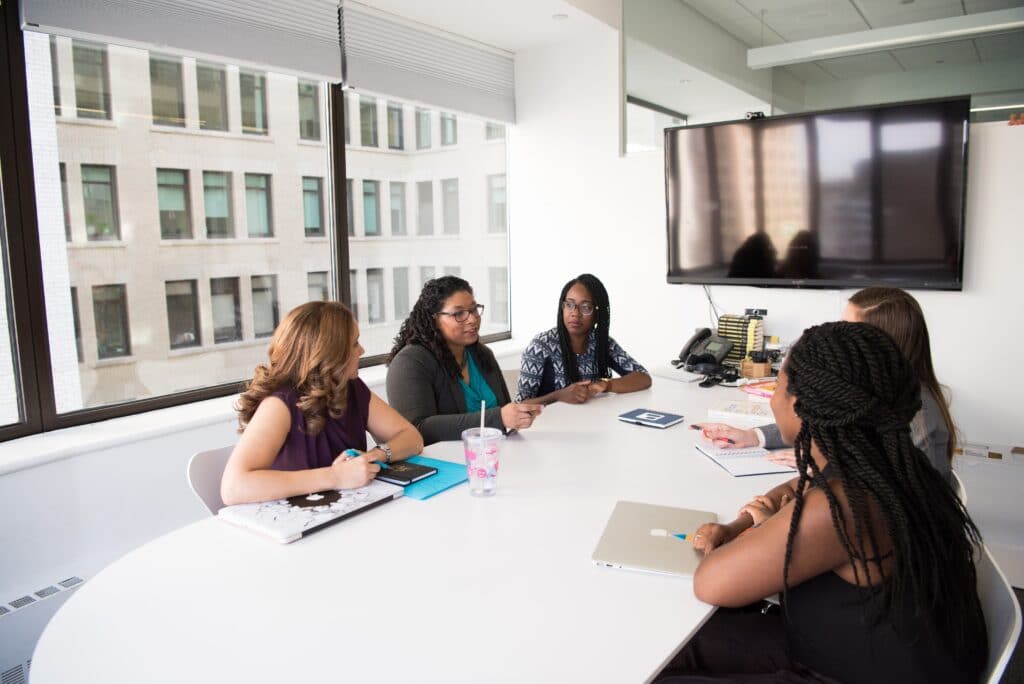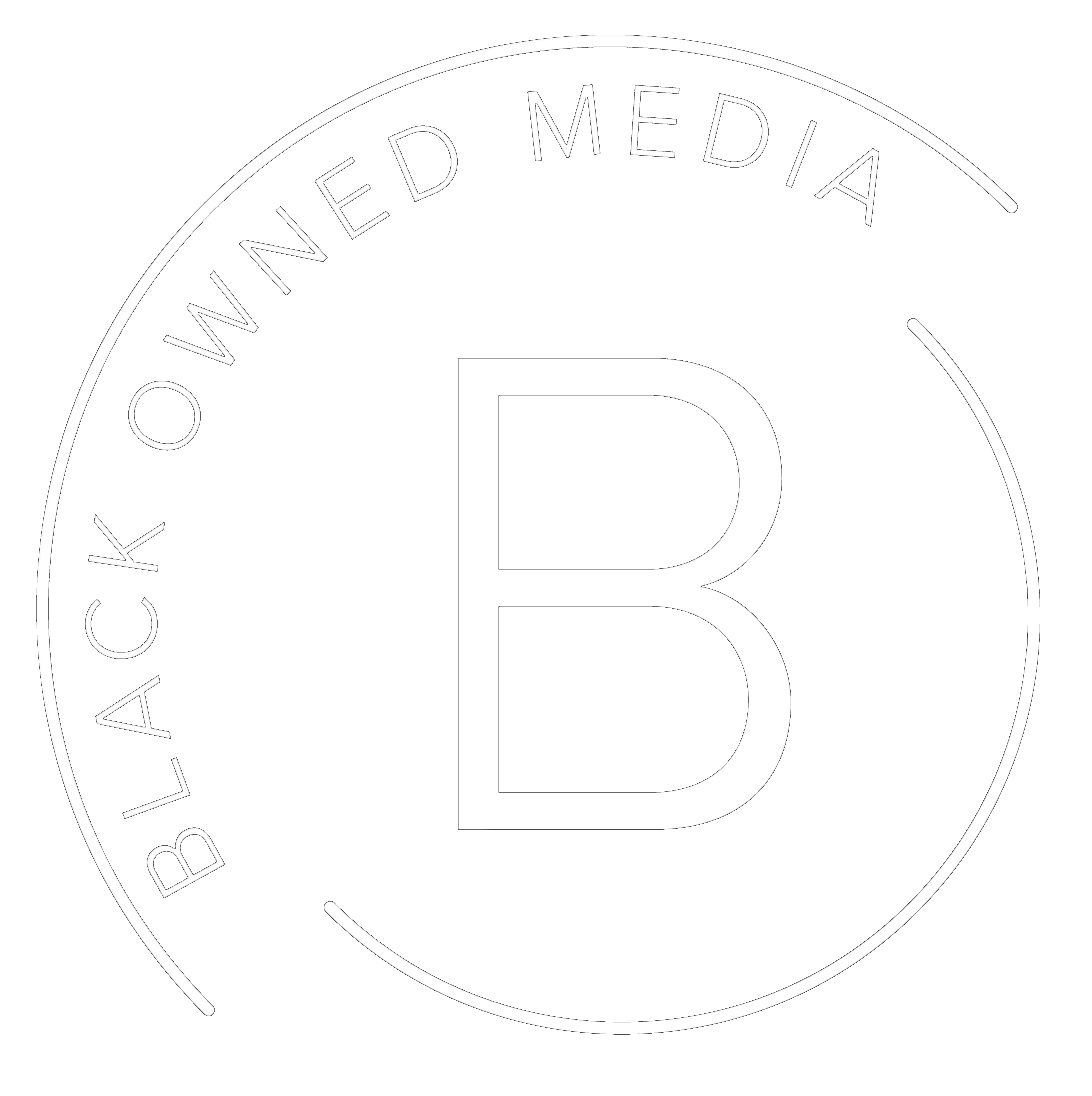In her exclusive piece for SHIFTER, Celeste Ceres explores why Black professionals are apprehensive about returning to work post-pandemic.
On your way to work, a fare collector stares at you skeptically as you place your token into the slot. You take the elevator up to your office’s floor, and you notice a passenger clutches their purse when you get inside. As you walk into the office, a colleague exclaims, “Your hair looks so much better when it’s straight like this!” It’s not even 9:00am yet, and you’re already drained. Incidents like these reflect the daily experiences that many Black professionals face the moment they step out of their home to start their work day.
The journey of Black folks in the workplace is often defined by having to brush over insensitive comments, downplay individual capabilities, counteract other people’s actions and behaviours motivated by unconscious biases, and channel frustrations into productivity. Whether it’s remarks on how “unprofessional” their natural hair is, being questioned about their credentials, or even having colleagues peer into lunch boxes of cultural dishes to say, “Oh, that looks interesting”, both the subtle and obvious racial slights towards Black people are endemic to office culture. The commonplace hostility of the office makes it nearly impossible for Black professionals to breathe, think, speak and innovate freely at work.
As offices are commencing in-person work arrangements and looking at post-pandemic plans, the situation at hand calls for a comprehensive examination of the ways in which the workplace––both offline and online––can exacerbate the discrimination that Black professionals face every day.
 Photo by Shvets from Pexels (edited)
Photo by Shvets from Pexels (edited)
Arya’s story
“I felt that because of the colour of my skin, my opinion and expertise were not valued or taken seriously at work,” explains Arya Atkins, a not-for-profit professional (name changed for confidentiality). “I was always second guessed.” In addition to being the only Black person on her team, she was also the only person of colour. She constantly felt stuck between a rock and a hard place, tiptoeing between passively appeasing her supervisors and outright disagreeing with their outdated methodologies.
“My team would say insensitive things. One time, I was sitting in on a hiring committee and they said it would look good if they hired a person of colour just to fit their “diversity quota”. I was appalled. Their minds couldn’t even comprehend the fact that what they were saying was racist. The thought of going back to work in the office to face that again is terrifying.”
Arya is not alone in her concerns of going back to work in person. For Black folks, navigating white-dominated fields and homogenous work environments is far more complex than just facing awkwardness, it’s the incessant demands to educate colleagues, absorb microaggressions, and look past being discredited.
 Photo by Shvets from Pexel
Photo by Shvets from Pexel
A crisis within a crisis
Many workplaces are now either going back to the office completely or implementing a hybrid model, unearthing a crisis within a crisis. Highly publicized incidents of racial injustices have led to Black people becoming “the Black token” in their workplaces: the go-to encyclopedia for all things Black history and culture and the spokesperson for social justice issues. To be the designated point person for Black issues––as well as a plethora of other social, economic and environmental issues––all while going through an extremely physically, mentally, emotionally and spiritually demanding time is an exhausting position to be in. Having to maintain efficient outputs while stepping up to the plate both in and out of work during a global pandemic makes the thought of going back to work even more dreadful.
After spending the past year and a half working remotely, research shows that the majority of Black professionals do not wish to return to working in the office after the pandemic. In the US, research found that 97% of Black professionals want a remote working model (The Future Forum, 2020). Meanwhile, a Race Relations in Canada study determined that the workplace was one of the most common places to experience discrimination (Environics Institute For Survey Research, 2019). Even though research has discovered that the majority of Canadians do not wish to return to work in the office, experts assert that anti-Black racism is indeed the prime reason why many Black professionals can relate to Atkins’ hesitancy to return to the office.
Expert advice on addressing anti-Black racism in the workforce
We spoke with Marcia Glasgow, anti-Black racism facilitator at Ryerson University’s Office of the Vice-President, Equity and Community Inclusion; Nicole Stibbe, EDI Consultant, Career Success Coach, and founder of Affirm You; and Wayne Purboo, VP at Amazon Advertising and the Co-Founder of the Onyx Initiative, to discuss some of the hesitations Black professionals have with returning to the office.
Discriminatory workplace practices manifest in both obvious and subtle ways, starting with the internal systems embedded into companies’ work cultures and policies passed down from leadership. These practices result in Black professionals often having to conform just to fit in.
“Starting to look at challenges [Black professionals] face is, firstly, lack of representation. We’re not reflected in certain sectors, especially in leadership roles,” explains Glasgow. “There’s a performance expectation. The continuous justification where you always have to qualify for your job that you’ve been in. You always have to prove yourself and say, ‘Well I have a masters, I have a professional degree, I’m licensed to do this role'”, and there is that continuous justification of your achievements.
Second, it’s also having to outperform colleagues, and then taking on additional responsibilities but not being recognized and compensated. And interesting enough, [in] Ryerson’s 2020 Anti-Black Racism Campus Climate Review Report published by the Office of the Vice-President, Equity and Community Inclusion, Black staff voiced feelings of being treated as perpetual outsiders, being passed over for promotions, being singled out, and being unsupported by supervisors.
And thirdly, it’s adapting to workplace practices and policies that lack the diversity, equity, and inclusion scope where people feel othered like they’re an anomaly and an outlier.” Glasgow points to an important realization: if companies and institutions don’t make an intentional and genuine effort to make a seat at the decision-making table for Black, Indigenous and other racialized folks, we will continue to struggle to be seen as valuable employees.
As Black folks, we have the mentality of pulling ourselves up by the bootstraps––where we acclimate to our environments for the greater good of “keeping the peace”. This leads to us not sharing our ideas and opinions freely, withholding from challenging authority, and ultimately dulling our shine.
“We tend to punch ourselves down, or minimize ourselves and our achievements in the workplace to not draw attention to ourselves,” Glasgow details. “This is done as a protective measure, to not draw attention because of past trauma in the workplace and also in society as well. And what we end up doing is conforming to what is perceived to be normal, acceptable behaviour in the workplace…you know, ‘fit in to get in’ just so we can stay employed, or to be promoted, and even to be respected. And these behaviours are manifested as code switching.”
Code switching, by definition, is the practice of changing languages or the way you express yourself in conversations. For Black professionals, it’s more than just how we articulate ourselves; it bleeds into every decision we make––from how we do our hair, to how we dress, and even what we eat. It doesn’t help that when we finally do overcome these boundaries and climb ladders to reach places of leadership, we are met with opposition.
A lesson on failure
Despite years of experience as an executive leader and serial entrepreneur, Wayne Purboo recalls being met with surprise when his white counterparts first learned that he was the CEO.
“I remember people meeting me for the first time at work and saying “Oh, so you’re the CEO.”
Despite navigating systems designed to keep Black professionals out of places of leadership, Purboo never let that stop him.
“You need to be very comfortable with the colour of your skin. You are at a disadvantage if you internalize discrimination and let other people’s opinions of your capabilities stop you from advancing into positions like CEO,” he shares.
Today, he and his wife, Nigela Purboo, are the co-founders of the Onyx Initiative, a non-profit organization created to help close the systemic gap in the recruiting and selection of Black post-secondary students and recent graduates for roles in corporate Canada. In a discussion with students, he provides a timely reminder: “We all carry this note of exceptionalism because all eyes are on us. We are afraid to fail because it feels like we are carrying the weight of every other Black person. Give yourself the opportunity to fail so you can do something great, otherwise you’ll do something mediocre and won’t realize your potential.”
Truly, it does often feel like failure isn’t an option for Black people, especially in the office; or so we’re taught to believe.
Nicole Stibbe describes the guilt she felt when she left the corporate world to pursue freelancing as a Career Success Coach and EDI Consultant: “As a Black professional, I felt I always needed to go, go, go and outperform. And giving up on that, [I questioned if] I was proving that ‘Oh yeah, look she gave up. She couldn’t keep up.’ There was a lot of guilt with that.”
With time and reflection, Stibbe was able to push past the guilt to realize not only was she not giving up by leaving the corporate world, she was pushing herself to new heights and thriving: “It’s only at this stage now where I feel comfortable in knowing I’m good. I don’t care what’s happening on the other side or with some of my colleagues. I’m good because I’ve got a great balance that works well for me.”
Society perpetuates the idea that falling short of expectations is unforgivable as a Black person. It leads to us faking it ‘til we make it, only to become disillusioned when we are still not welcomed in professional spaces. Not only does fear of failure add on to our stress, it is an extension of racial trauma.
“We all carry this note of exceptionalism because all eyes are on us. We are afraid to fail because it feels like we are carrying the weight of every other Black person.” – Wayne Purboo
Identifying racial trauma
Paralleling anti-Indigeneity, Black professionals have inherited feelings of brokenness based on our history of oppression. This forces us to perform our way into acceptance, rather than expressing our full identities. Add onto our racial background intersections of gender, sexual orientation, health conditions, and differences in ability, and it’s evident that the burdens Black professionals carry, especially in reference to colonialism and generational trauma, are overwhelming.
“It’s critical to adopt a greater understanding of anti-Black racism…how it contributes to stress, racial trauma, and how it affects performance, productivity and retention.” Glasgow explains. “Racial trauma carries psychological and physiological effects, including hypervigilance, the sweat, flashbacks, nightmares, avoidance, suspiciousness, semantic or body expressions. And it manifests physically in terms of…chronic headaches [and] heart palpitations as well. So there’s always that stress of thinking something is going to happen and it does affect your physical and mental health.”
Research shows the effects of generational trauma overflow into other areas, such as health. It’s alarming that Black, Indigenous and other racialized folks are 1.5 to 2.0 times more likely to suffer from chronic health conditions compared to white people (Price, J.H., Khubchandani, J., McKinney, M., & Braun, R. 2013).
Several diseases are more prevalent in Black people than any other race, including diabetes, hypertension, lung cancer, and asthma (DeNoon, n.d.). Furthermore, stress is proven to have a physiological impact on the immune system. Black, Indigenous and other racialized folks live with heightened levels of stress, and these can manifest into physical illness. Race and skin colour itself isn’t the reason for these disparities. Racism is.
“It’s critical to adopt a greater understanding of anti-Black racism…how it contributes to stress, racial trauma, and how it affects performance, productivity and retention.” – Marcia Glasgow
Black professionals should be able to access health accommodations without being misunderstood, distrusted and under-served. Black professionals should be able to be reserved if they choose to be without other colleagues assuming that all Black people are rude. They should be able to switch career paths without people assuming they are incapable and incompetent. Black professionals should be able to speak up in a meeting without being accused of being argumentative and facing the fear of reprisal.
Whether it’s being at a higher risk of developing disease and chronic illness, the assumption of criminal status, or the favouring of Eurocentric cultural values, navigating the workplace as a Black professional is tiring and downright traumatic. But with working from home proving to be a viable option that can spare Black professionals from much of the exposure to microaggressions they face, the current climate in the workplace presents a unique opportunity for employers to take a proactive stance on not just avoiding anti-Black racism, but working towards weeding it out altogether.
 Photo by Greta Hoffman from Pexels
Photo by Greta Hoffman from Pexels
As we go back to working in-person, here are some dos and don’ts that leaders of organizations can implement in their workplace to support Black professionals as they return:
#1) DO: Have open conversations at the right time.
It’s important to have authentic and timely conversations that not only address challenges that Black, Indigenous and racialized professionals face in the workforce, but dismantle biases within the team and challenge the dominant white male-centric culture. “I think it’s an opportunity for organizations to engage Black professionals in meaningful discussions, without causing harm. And that starts with asking, “What makes sense for you?” or, “How do you want to have these discussions?” or, “How can we shape these discussions?” And also including Black professionals as the focus….but not where they feel that they are vulnerable, or maybe retraumatized, as well,” explains Glasgow.
Black professionals should be able to approach their colleagues and senior managers if they want to receive feedback, express concerns, or propose ideas, the same way their white counterparts do. “There has been a history of leaders not having the same performance discussions with their Black employees as they do with their white employees. So a lot of leaders don’t even know what their Black employees need because they don’t have the conversations. They don’t know how to have the conversations so they just avoid them. And then all of a sudden, at the year-end, there’s a performance discussion and a lot of things come as a surprise because they’re not addressed as they happen, which is what happens with white employees––they get addressed as they come up and get regular feedback on an ongoing basis. That’s not the same case with Black colleagues…Those conversations don’t happen as regularly as they do with white colleagues.”
When should these conversations happen? Consistently––whether it be during individual meetings, all staff meetings, leadership meetings, or a combination of all three. In these meetings, it’s important to not uphold only the values and communication styles of the dominant group, but be mindful of different means of communicating. Sometimes addressing discrimination in the workforce can be an emotional experience. Some Black professionals would rather not be vulnerable with their emotions, so it’s important to create safe, brave spaces where colleagues can share their voice however and whenever they choose to do so, as well as appropriate support systems available for employees after they share.
#1) DON’T: Make assumptions.
Media paints a caricature of what society expects Black colleagues to be like, and the workplace isn’t exempt from perpetuating these generalizations. “Unfortunately, as Black communities that live in Black bodies and exist in Black bodies, there are stereotypes and tropes that are used to describe and anticipate the behaviour of Black people,” explains Marcia Glasgow. “Whether it’s the loud and aggressive Black woman, or the big, tall, scary, violent Black person, who in reality is diminutive, but because they’re Black, those tropes just tend to be used as descriptors against us.” Stereotypes, whether positive or negative, are harmful, and whether said or unsaid, hurtful. Staying informed of the realities of anti-Black racism and being mindful of behaviours that can potentially inflict a microaggression can go a long way in ensuring Black employees don’t feel objectified and under a microscope.
#2) DO: Integrate EDI throughout company culture, policies and procedures.
Just like we can’t always treat an internal sickness by slathering an external ointment on it, we can’t fix systemic shortcomings with topical solutions. EDI (equity, diversity and inclusion) is not HR jargon, it’s a critical foundation that should be embedded through all aspects of work culture––from strategic planning, to HR recruitment and retention, right down to addressing wage gaps. “[EDI] is at those touchpoints––it’s at onboarding…it’s in the performance review, the leadership meetings. It’s those expectations of, “We are working from an EDI lens and addressing anti-Black racism, anti-Indigeneity, Islamophobia, and this is what our organization is doing in every phase of HR recruitment and retention,” explains Glasgow. Indeed, having diverse personnel is only part of the solution. EDI efforts must anchor equity throughout the company’s mission to enable Black and other marginalized employees to feel valued and included.
#2) DON’T: View EDI from a risk mitigation standpoint.
Companies are at a loss when they view EDI from a risk mitigation standpoint instead of an approach to building a truly employee-centric company. Throwing money at EDI efforts without intentions of making real change will lead to a loss of not just finances, but potential talent. Like in Arya’s account earlier, a risk mitigation standpoint is concerned about, “How will this look in front of the public or the Board?” Instead of hiring Black and marginalized professionals because they are qualified, some companies hire them to fill an invisible “quota”. A foundation in equity, diversity and inclusion cannot be supplemented with tokenism. Hiring one Black person on a team for the sake of “looking diverse” is not EDI-rooted and it undermines Black professionals’ individual and collective capabilities and contributions to their workplaces.
#3) DO: Create employee resource groups/affinity groups and offer mentorship, sponsorship and allyship opportunities.
Employee resource groups (ERGs), otherwise known as affinity groups, are a way that employees of similar backgrounds can get together to share their experiences and cumulatively present concerns and findings to management. It’s essential that leaders of companies work towards pinpointing not just the challenges of Black employees and other marginalized folks, but building a community for their workers, where employees can celebrate their unique identities, achievements and contributions. “There has to be a safe space for Black people, Asian people, 2SLGBTQ+ people, whoever you are, to have conversations with like-minded people,” explains Stibbe. “And I find that organizations that do not have affinity groups are the ones that sometimes will have the higher turnover because there isn’t a safe space and there isn’t a collective voice in order to take to leadership and say, “These are our experiences, and there’s enough of us behind us here that can speak to these experiences’” Otherwise, it’s kind of one person trying to champion a cause in the organization.”
Going beyond ERGs, there are several other programs that leaders in organizations can implement to foster a sense of belonging for employees. Mentorship provides an exchange of advice and support for both the senior and junior employees involved, while sponsorship involves a senior level employee advocating for the betterment of another colleague and bringing up important concerns to management. Allyship is a slightly less formal partnership where colleagues vouch for each other. These are all meaningful, long-term ways in which employers can help build inclusivity and trust amongst marginalized employees.
#3) DON’T: Single out employees who speak up.
Black colleagues are often challenged in ways in which their white counterparts are not. Black employees who call attention to injustices in the workplace should not be penalized for using their voice. In addition to having a seat at the table, it’s important that Black employees have an environment where they can speak up without being dismissed or singled out and where organizations promote a culture of belonging. “When stories are being shared, it’s about listening and believing the stories and not inflicting another microaggression [by telling them] “You’re overreacting, that didn’t happen” or, “It happened to me as well, so it’s not just the Black situation,” shares Glasgow.
#4) DO: Be flexible and understanding of different work styles.
With the exception of frontline workers, employees have largely been working from home for the past year and a half.
“We have proven during this pandemic that there is the ability to work effectively with flexible work environments and remote work environments. That needs to just continue. It needs to be the norm in order to allow people, whether it’s because of a chronic illness, or family conditions, that if I want to break up my 8-hour or 9-hour work day as I see fit, I should have that flexibility,” Stibbe explains. “For the past 11 years in the corporate world, I’ve negotiated working remotely. It was something that as I started the interview process or started working with my leaders [I’d] say, “This is a non-negotiable for me. I bring value to the table, but you have to respect the flexibility I need in order to be a whole person.” Because if I’m running around trying to figure out how I get home on time, how I catch that GO train, how I get food on the table for the kids…I am not bringing my best self to work.”
Whether it’s allowing employees to spread out their hours as needed or work from home entirely, flexibility should be embraced and negotiation should be encouraged to help Black employees bring their full selves to work. This is a substantial concern considering that more than 80% of Black mothers are breadwinners in their households (White, G. B., 2017). This indicates that there is less time for them to spend at home. For Black mothers especially, flexible work schedules, work from home options, and paid time off are crucial factors in alleviating some of that stress.
“I bring value to the table, but you have to respect the flexibility I need in order to be a whole person” – Nicole Stibbe
#4) DON’T: Be rigid to change.
A top-down, “do as I say” approach to management stifles diversity, innovation, and independence. “Workplaces need to become more flexible. They need to adapt to their employees’ needs, it’s not the other way around. Employees shouldn’t have to adapt to the workplaces, workplaces need to adapt to their employees,” explains Stibbe. When it comes to working from home though, she has one caution of the possible downside to flexible work environments. “In saying that…it’s really [important to] set those boundaries and make sure that you’re respectful of your own boundaries, [and] making sure people are respectful of your boundaries as well…because it is easy for somebody to email you or call you after hours, especially in the corporate world, because they think, ‘Oh you’re at home anyways, so can you do this quick meeting, can you take this call?’ And it’s pushing back and saying, ‘No, I work, I put in a full day, and that’s the extent of my workday.’”
#5) DO: Be accommodating of different levels of abilities and health conditions of employees.
As mentioned earlier, Black individuals are at a higher rate of suffering from chronic illness and autoimmune diseases than their white counterparts. Therefore, Black health is an essential consideration when thinking about EDI in the workforce: “I think it’s important from an equitable lens to address factors that contribute to chronic illnesses…meeting people where they are. Not looking at a one size fits all [model], but meeting people where they are and taking into account their individual needs. It’s about listening without judgement,” suggests Glasgow.
Instead of viewing the prioritization of Black, Indigenous and racialized employees’ health in the workplace as an inconvenience, it needs to be viewed as an investment to support employee’s work-life balance and increase employee satisfaction, and as a result, increase employee retention.
“If employees have chronic illnesses, there’s opportunity for organizations to offer more support as well. I think benefit structures are very limited right now. They are limited in what they offer employees, it can be expensive for some employers to enhance benefit plans and programs and they often view it as negatively impacting their bottom line, rather than seeing it as an investment in their human capital. I think if you want to attract and retain the best employees, you must have programs and resources that provide opportunities for employees to take advantage of all the physical, financial and emotional wellbeing supports that are available that we all know employers could be offering,” Stibbe proposes.
“If you have resources where you can pick up the phone because your employer offers a service that allows for virtual medical care, what a wonderful opportunity to get medical care where you may have not had that before. Where the push also needs to be focused, is ensuring employers are working with their benefit providers to ensure diversity in the various offerings. For example, if I want a counsellor that specializes in race-based PTSD treatment, it would be wonderful if my employer’s EFAP (Employee and Family Assistance Program) could match me to a counsellor to address my specific need. Employers could look at how they support their employees and make sure they have the tools and resources that are flexible enough and inclusive, to adapt to the needs of all employees, not just the dominant group, which we know unfortunately has historically been white males”.
#5) DON’T: Ask employees for proof of disabilities or medical conditions.
Requiring that employees supply their employers with their medical records to ask for an accommodation sounds like a reasonable request, right? Think again. For a number of reasons––including socioeconomic factors, lack of accessibility, and distrust with the health care system––Black, Indigenous and other racialized folks sometimes cannot obtain the records they need to “prove” their ailment or disability. Lack of paperwork does not mean a need does not exist. Marginalized communities, and Black communities in particular, statistically face more barriers to health care than their white counterparts. What happens when Black individuals’ concerns about their physical or mental health go dismissed by their doctors, leading to no diagnosis, and thus no medical record, despite having persistent symptoms? Their condition or disability does not go away because it doesn’t have a classification assigned to it. Therefore, demanding medical reports is often not an equitable expectation.
“The way organizations are structured right now––if you have a disability, you need to provide proof in order to get accommodation, and that proof needs to be in the form of medical notes, medical reports, etc. But if there were more flexibility to begin with in the work structure, people wouldn’t need to feel the need to prove themselves or prove their disability because even proving a disability is a challenge of itself––not everyone has access to a medical physician. Stigma remains a significant challenge and some do not have willingness to admit that they have a physical or emotional condition challenge, and they may not want their workplace to know they are even accessing programs or resources. These conversations need to be normalized in the workplace,” explains Stibbe.
”Some people will just try to push through, and make their condition worse, or worse yet, be labelled as a poor performer because they’re not meeting the expectations of the job and end up being terminated. I think putting everybody in a bucket that is labelled: disabled, you need an accommodation, which unfortunately often means, “You need to follow this process and secure a medical note or a report” limits the opportunity to be creative [in problem solving].” Having flexible, trust-based policies for filing accommodation (or leave) requests can create a much more inclusive and equitable work environment for everyone.
#6) DO: Use your privilege for change.
Whether it’s as a fellow racialized person, white ally, or light-skinned Black professional, colleagues can use the privilege they have to advocate for the betterment of Black professionals. Studies over the years have shown that landing a job and climbing the ranks is even more challenging for darker-skinned Black professionals than it is for light-skinned Black professionals. A study entitled Colorism in the Job Selection Process: Are There Preferential Differences Within the Black Race? found that participants tended to give preferential treatment to applications of lighter-skinned candidates, even if those candidates had lower levels of qualification, than their darker-skinned Black counterparts with higher levels of education and qualifications. Both racism and colourism are indeed prevalent in the workplace. It’s important that other racialized people, including light-presenting Black people, rally together to ensure Black employees of all shades are respected and protected. This includes practicing micro-affirmations to validate darker-skinned Black professionals in the workplace. For example, voicing appreciation for a darker-skinned Black colleague, for instance, “Arya has a great idea to share during our meeting” or “I support Arya as a project lead.”
Overcoming discrimination is not going to be a one-workshop solution. It needs to be an intentional and proactive effort that is consistent, encourages allyship, encompasses all employees as part of the solution, and uses benchmarks to ensure long-term changes.
#6) DON’T: Just talk the talk without walking the walk.
Often, when discussing EDI, employers excel at piling on praise without taking tangible steps towards progress. It’s a form of performative allyship: when allies share what they know about inequalities without using their privilege or resources to enact real change. The sophisticated discourse lets employers participate in the dialogue without taking action. “To dismantle interpersonal racism and institutional racism, it [requires] looking at the systemic level and what’s tied to those systems, policies and practices; policies and practices that are not inclusive and that were created without our voices and personal experiences. It’s really about looking at this collective mission…including lived experiences, to create an equitable and inclusive climate and workplace environment for Black professionals to not just thrive, but flourish,” describes Glasgow.
 Photo by Christina Morillo from Pexels
Photo by Christina Morillo from Pexels
Final thoughts
Addressing why Black professionals are apprehensive about returning to work in the office is a much more complex task than just indexing the discomforts of Black individuals in the workforce. It takes understanding how workplaces perpetuate racial trauma and minimize the experiences of Black people, Indigenous communities, and other racialized folks. While working from home has afforded some relief in reducing the amount of exposure to microaggressions that Black professionals face, it’s not the end-all-be-all of combating anti-Black racism in the workplace. There are several factors that companies should consider when transforming their office from a place where Black professionals feel unworthy, unappreciated and discredited for their identities, to a place where they feel celebrated, encouraged, and heard––whether it’s encouraging employee allyship, having timely and open dialogues, or modifying medical accommodations policies.
There’s so much that Black professionals bring to the office outside of just résumé credentials, from innovation, to expertise informed by both education and lived experiences, to diverse perspectives, community connections, creative expression and empathy. Employers can gain immensely in not just hiring Black employees, but truly valuing them. Not taking a stand against anti-Black racism is not just a loss for Black folks, but society at large.
Special thanks to Marcia Glasgow, Melissa Yu Vanti, Nicole Stibbe, Wayne Purboo, Nigela Purboo, Nicole Chrysostom-Murray, and Arya Atkins.

Related Article:




